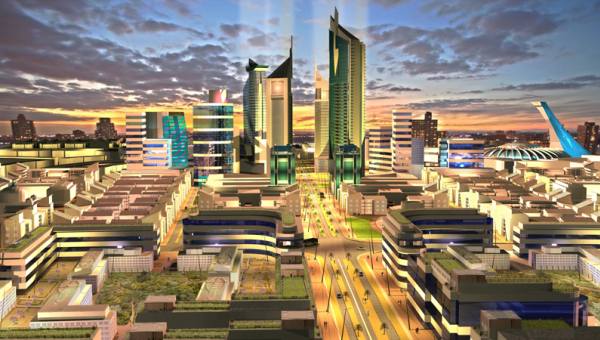Buffer zone ban on Konza tech city development lifted
Buffer zone ban on Konza tech city development lifted

Kenya’s government has lifted a ban that prohibited development within a 10km radius around the country’s future multi-billion dollar Konza technology city.
Last year in January, Kenya’s then president Mwai Kibaki presided over the ground breaking ceremony of the 5,000-acre technology city project, also referred to as Silicon Savannah.
The project is to be built just over 60 km from Nairobi and is planned to feature business processing outsourcing (BPO) centres, a science park, university campus, an international business district and commercial and residential properties.
Government; though, banned any development within the buffer zone, until a ’Local Physical Development Plan’ (LPDP) was approved by local authorities in conjunction with the Konza Technopolis Development Authority (KOTDA).
But on Wednesday, the Kenyan government gave a notice stating that investors are free to put up buildings, roads and other social amenities in the buffer zone, provided they strictly adhere to the LPDP.
“Notice is hereby given that the director of planning has lifted the declaration of area measuring 75,838.4 acres covering parts of Makueni, Machakos and Kajiado as a special planning area,” said Augustine Masinde, director of physical planning at Kenya’s ministry of lands.
Speaking to ITWeb Africa, Henry Munene, a development expert with real estate firm LockWood Properties, said that government took the step to ban development within the buffer zone to avoid haphazard development.
“Land around the Konza City development zone is selling at a very expensive rate, owing to the fact that the technocity will attract huge investments from large multinationals,” Munene told ITWeb Africa.
“By banning the buffer zone development until the LPDP was approved, the government has not only protected value of the investments made by the land buyers around Konza City, but also avoided a lot of land tussles that comes with demolition of illegal structures in designated zones,” said Munene.
Despite having officially launched the commencement of construction activities of the future technology city, government is yet to make any serious progress in achieving a 2030 deadline to complete the project, as construction of the city is yet to take place.
But that could all change.
“By allowing the private investors to start construction, the government could also be acting strategically,” added Munene.
“With structures coming up within the buffer zone, the government will be in a better position to negotiate with international investors to also invest in the project, and help the country build its first technology city,” said Munene.
The city vision is planned to be achieved via a ‘public-private partnership’, where government takes the role of constructing the basic infrastructure, regulatory guidelines and also attraction of large scale investors.
Munene said government is already starting to play its part, and the rest of the project’s responsibilities rests with private developers and multinationals.
“I must however say, lifting the ban does not automatically mean structures will start coming up; investors are interested in monitoring the government’s moves to determine whether the development risk is worth taking,” Munene said.